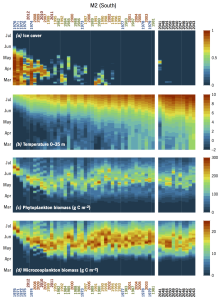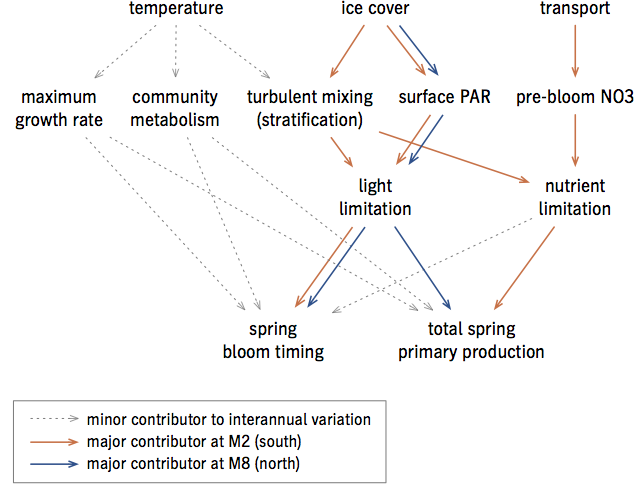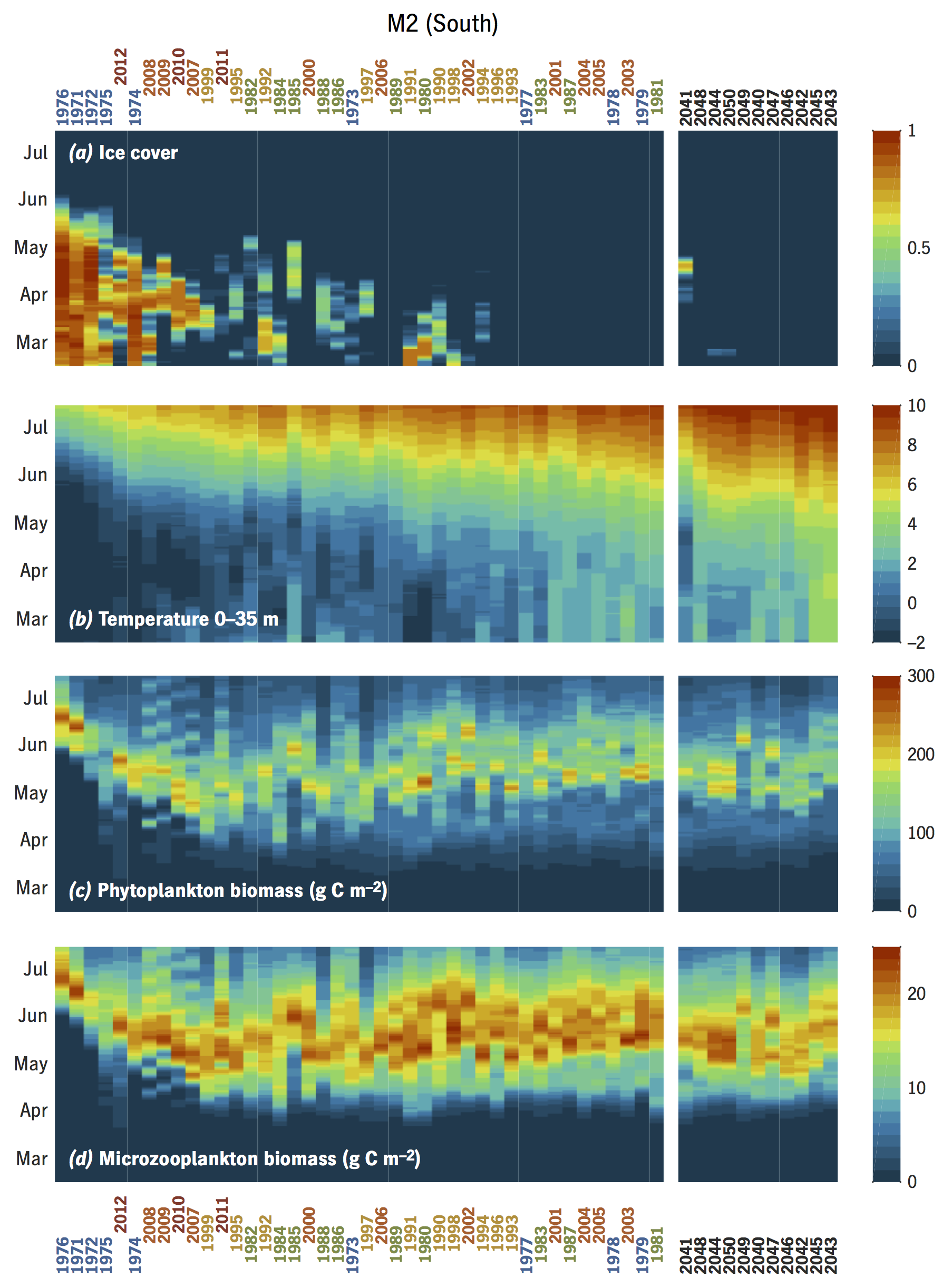The Eastern Bering Sea hosts extremely rich pelagic and benthic fisheries, and also experiences strong interannual variation in both fisheries recruitment and the underlying physics and plankton biology. This paper…
Banas NS, Zhang J, Campbell RG, Sambrotto RN, Lomas MW, Sherr E, Sherr B, Ashjian C, Stoecker D, Lessard EJ (2016) Spring plankton dynamics in the Eastern Bering Sea, 1971-2050: Mechanisms of interannual variability diagnosed with a numerical model. J. Geophys. Res.,
… describes a planktonic ecosystem model for the region that integrates biomass, rate, and process measurements from the 2007–2010 Bering Sea Project field program. Our question is: What controls variation in spring primary production (in both magnitude and timing) across the range of warm and cold annual conditions seen over the past 40 years?

For a dynamical model to answer a “why” question like that, it needs to be carefully examined mechanistically as well as statistically. As a focus for model validation, we constructed a multi-layered time series describing the progression of one middle-shelf patch near 60N in 2009 from before the spring bloom into early summer—not only nutrients, and biomass but process measures like the f-ratio and e-ratio, phytoplankton community growth rates (from four independent types of measurement!), and microzooplankton community grazing rates. This gave us tremendous insight into the model parameterization, and validation against interannual variation in bloom timing provided an additional constraint.
The upshot of this project is a stringent winnowing of the mechanistic pathways linking climate to primary production in this system. Direct dependence of growth and metabolic rates on temperature turn out to be much less significant overall than a number of correlates of temperature, with different mechanisms controlling primary production magnitude vs. timing, and the northern vs. southern shelves:

One implication is that mesoscale atmospheric patterns (wind-driven currents, mixing by storm winds) appear to be crucial to long-term future trends in marine productivity here. This is a hard thing for climate models to get right. The problem of future prediction would be a lot easier if gross variables like temperature and ice cover turned out to be the mechanistic links to the plankton.
We also found that it is nearly impossible to get bloom magnitude, bloom timing, and grazing/loss rates right at the same time unless the phytoplankton dramatically change their light response between seasons. In a new paper…
Sloughter TM, Banas NS, Sambrotto RN (2019) Seasonal variation in light response of polar phytoplankton. Journal of Marine Research 191:64-75
… PhD student Trevor Sloughter has followed up on this model result with a meta-analysis of past lab and field studies, and analysis of Bering Sea field observations (Sambrotto et al., Deep Sea Res, 2016), and confirmed it. Usually, conceptual or mathematical models of photoadaptation assume that when light is low, phytoplankton increase their photosensitivity to compensate. Our results suggest that in highly seasonal environments like the Arctic seasonal ice zone, and on seasonal as opposed to shorter timescales, phytoplankton communities often do the opposite, reducing their investment in light harvesting to save on metabolic running costs during winter, under-ice darkness.
Sloughter et al. (2019) also presents a simple method for parameterising these seasonal dynamics in models, and demonstrates that they improve our hindcasting ability in the Bering Sea. We are currently exploring whether the same seasonal photoresponse describes phytoplankton in the Barents Sea and other Arctic seasonal ice zones, building on postdoc Fabian Grosse’s work in the NERC Arctic PRIZE and PEANUTS projects.
